Intro
Discover key facts about Doxycycline Hyclate, an antibiotic treating infections, with insights on dosage, side effects, and uses, including acne and Lyme disease treatment.
Doxycycline hyclate is a type of antibiotic that belongs to the class of tetracyclines. It is widely used to treat various bacterial infections, including acne, Lyme disease, and respiratory tract infections. The importance of doxycycline hyclate lies in its broad-spectrum activity and its ability to penetrate deep into tissues, making it effective against a wide range of bacteria. Understanding the properties and uses of doxycycline hyclate is crucial for healthcare professionals and patients alike, as it can help in making informed decisions about treatment options. Moreover, with the rise of antibiotic resistance, it is essential to use antibiotics like doxycycline hyclate judiciously and under medical supervision.
The mechanism of action of doxycycline hyclate involves inhibiting protein synthesis in bacteria, which ultimately leads to the death of the bacterial cells. This is achieved by binding to the bacterial ribosome, which is responsible for protein synthesis. The effectiveness of doxycycline hyclate against a broad spectrum of bacteria makes it a valuable asset in the treatment of various infections. However, its use must be balanced with the potential risks of side effects and the development of antibiotic resistance. As with any medication, it is crucial to follow the prescribed dosage and duration of treatment to ensure the best outcomes and minimize the risk of adverse effects.
Doxycycline hyclate is also notable for its relatively long half-life, which allows for once or twice daily dosing, improving patient compliance. This pharmacokinetic property, combined with its broad-spectrum activity, makes doxycycline hyclate a preferred choice for many clinicians. Furthermore, its ability to treat infections caused by both Gram-positive and Gram-negative bacteria, as well as certain atypical bacteria, underscores its versatility. Despite these advantages, the use of doxycycline hyclate, like all antibiotics, should be guided by susceptibility testing whenever possible to ensure its effectiveness against the specific bacteria causing the infection.
Introduction to Doxycycline Hyclate
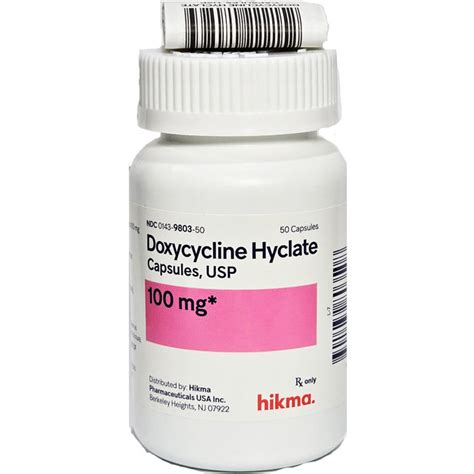
Benefits of Doxycycline Hyclate
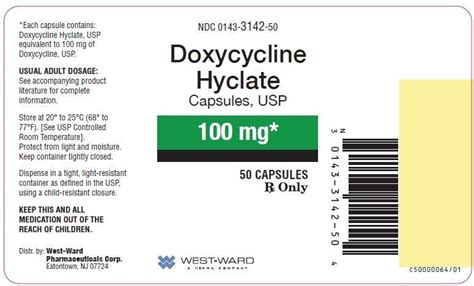
Working Mechanism
The working mechanism of doxycycline hyclate involves the inhibition of protein synthesis in bacteria. By binding to the 30S subunit of the bacterial ribosome, doxycycline hyclate prevents the addition of new amino acids to the growing peptide chain, thereby inhibiting protein synthesis. This action is bacteriostatic, meaning it stops the growth of bacteria, allowing the host's immune system to clear the infection. The effectiveness of doxycycline hyclate against a broad spectrum of bacteria, including both Gram-positive and Gram-negative bacteria, makes it a versatile antibiotic in clinical practice.Uses of Doxycycline Hyclate

Steps for Administration
The administration of doxycycline hyclate typically involves oral dosing, with the specific dosage and duration of treatment depending on the type and severity of the infection being treated. It is essential to follow the prescribed regimen to ensure the best outcomes and minimize the risk of side effects. Patients should also be advised to take the medication with plenty of water and to avoid taking it with dairy products or other substances that may interfere with its absorption.Side Effects and Precautions
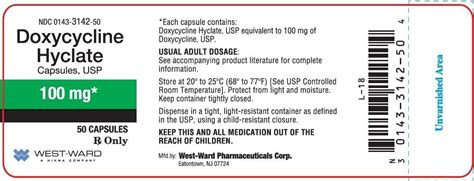
Practical Examples
Practical examples of the use of doxycycline hyclate can be seen in clinical practice, where it is often prescribed for the treatment of community-acquired pneumonia, acne, and as prophylaxis against Lyme disease following a tick bite. In these scenarios, doxycycline hyclate's broad-spectrum activity and favorable pharmacokinetics make it an effective and convenient treatment option. Statistical data have shown that doxycycline hyclate is effective in treating these conditions, with high cure rates and relatively low rates of adverse effects.Statistical Data
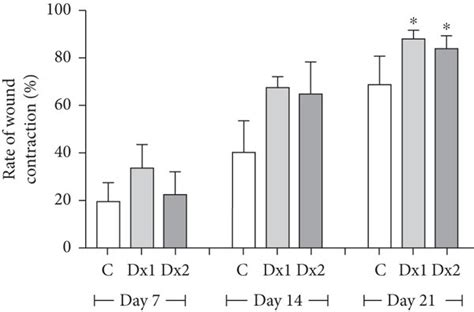
SEO Relevance
The SEO relevance of doxycycline hyclate is significant, as it is a widely searched term on the internet. Individuals looking for information on doxycycline hyclate may be seeking details on its uses, side effects, and dosage. By incorporating relevant keywords and phrases into the content, such as "doxycycline hyclate uses," "doxycycline hyclate side effects," and "doxycycline hyclate dosage," the article can improve its visibility in search engine results, providing valuable information to those seeking it.Conclusion and Future Directions
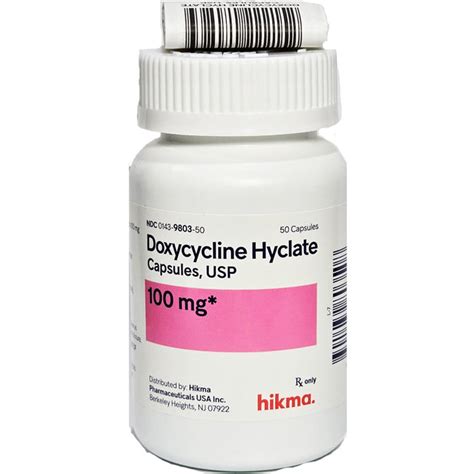
Final Thoughts
Final thoughts on doxycycline hyclate emphasize its importance as a therapeutic agent in modern medicine. By understanding its benefits, working mechanism, and potential side effects, healthcare professionals and patients can make informed decisions about its use. The incorporation of doxycycline hyclate into treatment regimens can significantly improve outcomes for patients with bacterial infections, underscoring the need for continued research and development in the field of antibiotic therapy.What is doxycycline hyclate used for?
+Doxycycline hyclate is used to treat a variety of bacterial infections, including respiratory tract infections, skin and soft tissue infections, Lyme disease, and certain sexually transmitted infections.
How does doxycycline hyclate work?
+Doxycycline hyclate works by inhibiting protein synthesis in bacteria, which ultimately leads to the death of the bacterial cells.
What are the common side effects of doxycycline hyclate?
+Common side effects of doxycycline hyclate include gastrointestinal disturbances such as nausea, vomiting, and diarrhea, as well as photosensitivity and hypersensitivity reactions.
